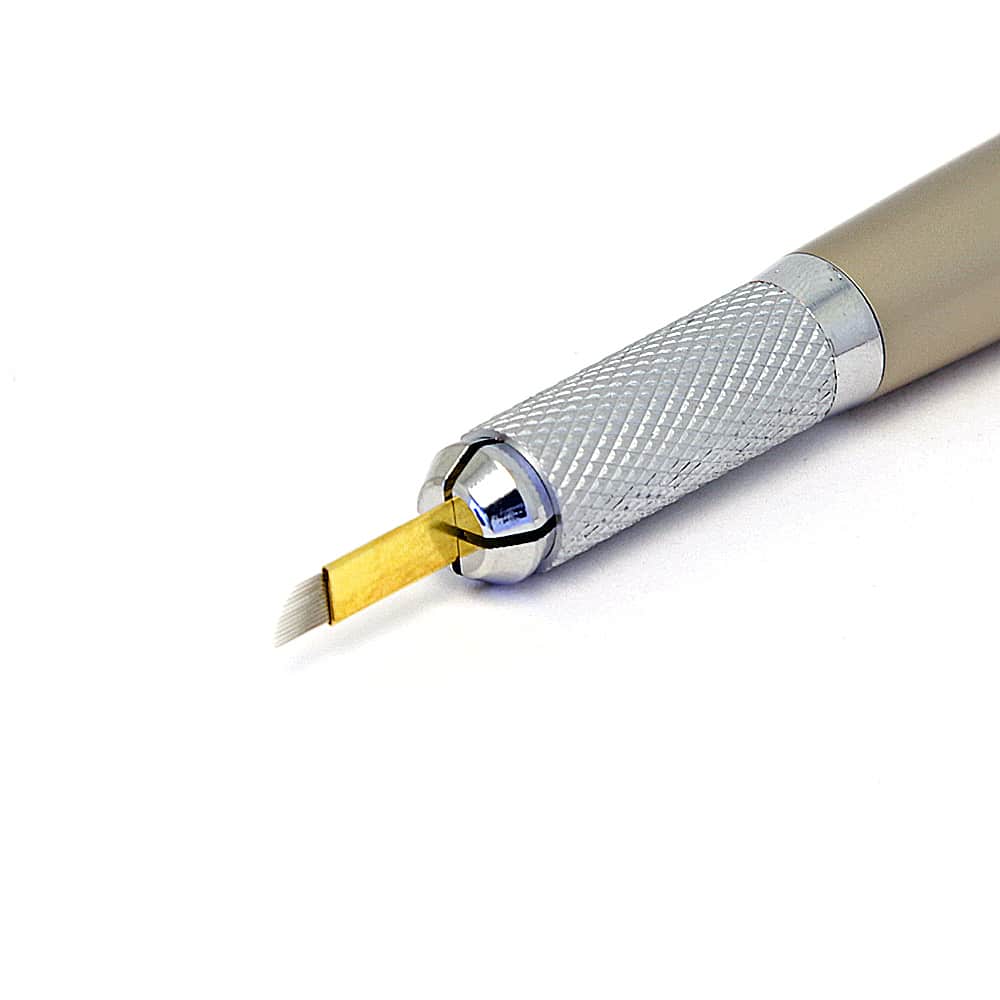Introduction
Microblading is a type of semi-permanent tattooing that involves using a fine blade to deposit pigment under the skin. It can be used to create the appearance of fuller, more evenly shaped eyebrows. If you’re thinking about becoming a microblading artist, one of the first decisions you’ll need to make is which type of tool to use.
In this blog post, we’ll discuss the different types of microblading tools, as well as some factors to consider when choosing the right tool for you.
The Different Types of Microblading Tools.
Traditional Hand Tools
Traditional hand tools are the simplest form of microblading tool, and usually consist of just a blade and handle. This type of tool is best suited for those with experience in microblading, as it requires a steady hand and precise control.
Rotary Tools
Rotary tools are slightly more complex than traditional hand tools, and usually come with a motorized head that spins the blades. This type of tool is better suited for beginners, as it can help to reduce shaking and provide more consistent results.
Pen-Style Tools
Pen-style tools are the most advanced type of microblading tool, and usually feature a digital display that allows you to select the perfect settings for your client’s needs. This type of tool is best suited for those who have extensive experience in microblading, as it offers the most control and precision.
Consider Your Clientele.
If You Have Sensitive Clients
If you have clients with sensitive skin, you’ll want to choose a microblading tool that is gentle and won’t cause irritation. Traditional hand tools and rotary tools can be too harsh for sensitive skin, so a pen-style tool may be the best option.
If You Have Clients With Oily Skin
If you have clients with oily skin, you’ll want to choose a microblading tool that can penetrate the oil and reach the hair follicles. A rotary tool or a traditional hand tool may be your best option, as they can both provide enough power to penetrate the oil.
If You Have Clients With Dry Skin
If you have clients with dry skin, you’ll want to choose a microblading tool that won’t cause further dryness or irritation. A pen-style tool may be the best option for dry skin, as it is less likely to cause irritation than a rotary tool or traditional hand tool.
Consider The Shape of Your Client’s Eyebrows.
If Your Client Has Curved Eyebrows
If your client has curved eyebrows, you’ll want to choose a microblading tool that can create fine, hair-like strokes. Traditional hand tools and rotary tools can both achieve this, but pen-style tools are better suited for straight brows.
If Your Client Has Straight Eyebrows
If your client has straight eyebrows, you’ll want to choose a microblading tool that can create crisp, defined lines. Rotary tools and pen-style tools are both good choices for this, but traditional hand tools may produce less precise results.
If Your Client Has Sparse Eyebrows
If your client has sparse eyebrows, you’ll want to choose a microblading tool that can help you create the illusion of fuller brows. Pen-style tools are best suited for this, as they can create fine, hair-like strokes that mimic natural eyebrow hairs.
My Favorite MICROBLADING TOOLS (My "Go To" Microblading Tools)
In this video I will show you all of my FAVORITE Microblading Tools! It took many years of trying different products out but now I ...
Other Factors to Consider.
Your Personal Preferences
When choosing a microblading tool, you should also consider your personal preferences. What type of handle do you prefer? What size needle do you feel most comfortable using? Do you prefer a tool with a straight blade or a curved blade?
Answering these questions will help you narrow down your options and find the right microblading tool for you.
The Price
Another factor to consider when choosing a microblading tool is the price. Traditional hand tools and rotary tools are typically more affordable than pen-style tools. However, pen-style tools may offer features that justify the higher price tag, such as adjustable needle depth and built-in light sources.
Ultimately, the best microblading tool for you is the one that meets your needs and fits your budget.
Conclusion
When choosing a microblading tool, there are many factors to consider. The type of tool, the shape of the eyebrows, and the skin type are all important factors. Other considerations include your personal preferences and the price. By taking all of these factors into consideration, you can choose the right microblading tool for you and your clients.
















